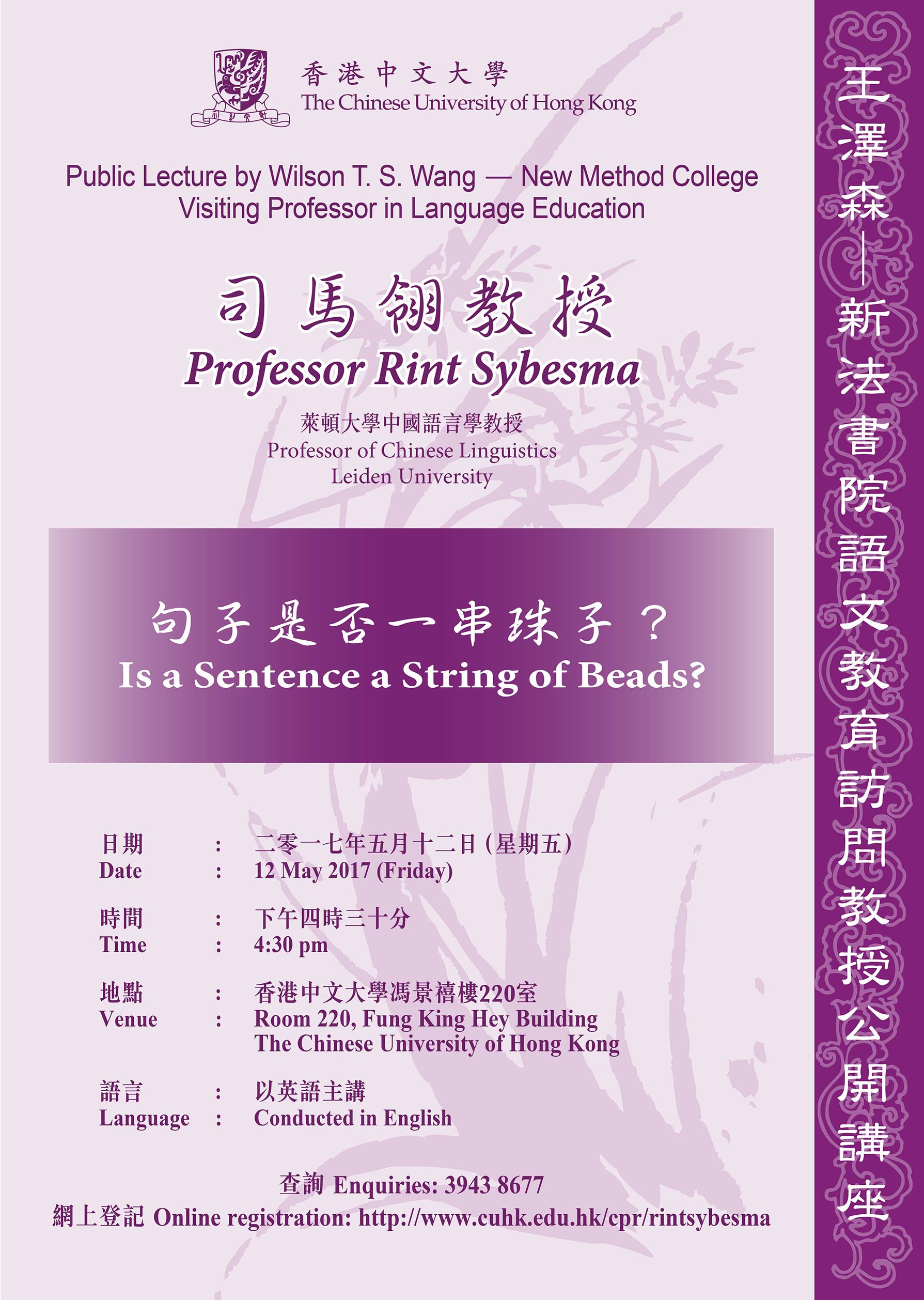Events
Wilson T.S. Wang – New Method College Visiting Professor in Language Education Public Lecture by Professor Rint Sybesma on Is a sentence a string of beads? (in English)
12 May 2017
4:30 pm
Room 220, Fung King Hey Building, CUHK
Rint Sybesma is Professor of Chinese Linguistics at Leiden University (the Netherlands). He was educated at Leiden University and Liaoning University. He holds a Ph.D. in Linguistics from Leiden University (1992). His dissertation was called Causatives and accomplishments: The case of Chinese ba. His main research interests lie in the area of comparative theoretical syntax with special focus on the languages spoken in China.Recent publications include articles/book chapters about the nominal domain (role of classifier; expression of definiteness; in Chinese and Zhuang), the verbal domain (resultatives, inner aspect and the degree of analyticity of Chinese verb phrase), aspect and tense (how does a language without morphological reflexes of tense express tense?) and sentence final particles (especially in Cantonese, and the relation with CP). He is also the Editor in Chief of the Encyclopedia of Chinese Language and Linguistics (5 volumes, 3500 pages, 512 articles), which was published in January 2017.
3943-8677
When someone says “John loves himself”, the word himself points back to John. But in the sentence “John’s father loves himself” himself cannot point back to John however much we try. Why is this case? It is has to do with the following. When you look at a sentence, or listen to one, the different words that make up the sentence seem like beads on a string, which have been strung onto the string one by one. When you look a bit more closely, however, you will discover that this is not the case: words are not put on the string one by one, but group by group. And because John in the second sentence is just a member of such a group and not the frontman, so to speak, himself cannot refer to John. Using the work by Noam Chomsky and Steven Pinker, we will investigate this matter and see how we can identify these groups.




